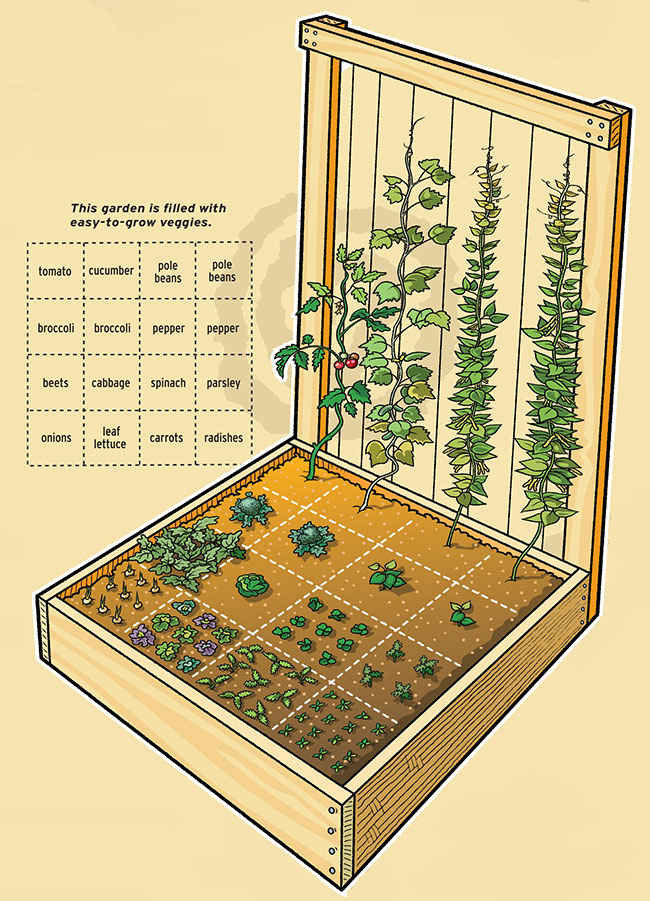Maximize Small Spaces: Winter Gardening Supplies
In the heart of winter, as the world outside turns frosty and dormant, many of us yearn for the vibrant greenery and fresh produce of warmer months. But what if you could bring a touch of spring into your home, even in the smallest of spaces? Winter gardening is not just a possibility; it's a delightful reality. With the right supplies and a bit of creativity, you can transform your compact living area into a thriving indoor oasis. Let's explore how to maximize small spaces with winter gardening supplies.
The Art of Compact Gardening
Embracing the Small Space Challenge
Compact gardening is an art form that turns limitations into opportunities. Whether you live in a tiny apartment or a cozy cottage, every nook and cranny can be a potential garden spot. The key is to choose the right plants and supplies that thrive in small spaces and cold weather.
Choosing the Right Cold Weather Plants
When it comes to winter gardening, selecting the right plants is crucial. Some plants are naturally hardy and can withstand cooler temperatures. Consider herbs like rosemary, thyme, and parsley, which are not only resilient but also add a fresh touch to your winter meals. Vegetables like spinach, kale, and lettuce are also excellent choices for indoor winter gardens.
Essential Winter Gardening Supplies
Space-Saving Pots and Containers
One of the biggest challenges in compact gardening is finding the right containers. Space-saving pots come in various shapes and sizes, designed to fit snugly into tight spaces. Opt for hanging planters, wall-mounted pots, or tiered plant stands to maximize vertical space.
Indoor Gardening Lights
Light is a critical factor in winter gardening. With shorter days and less sunlight, indoor gardening lights can provide the necessary illumination for your plants. LED grow lights are energy-efficient and can be adjusted to mimic natural sunlight, ensuring your plants get the light they need to thrive.
Soil and Fertilizers
The right soil and fertilizers are essential for healthy plant growth. Choose a well-draining potting mix specifically designed for indoor plants. Organic fertilizers can provide the necessary nutrients without the harsh chemicals, keeping your indoor garden eco-friendly.
Creative Solutions for Urban Farming
Vertical Gardening
Vertical gardening is a space-saving technique that allows you to grow plants on walls or in hanging baskets. This method not only saves floor space but also adds a unique aesthetic to your home. You can use trellises, wall-mounted planters, or even DIY vertical gardens to create a lush, green wall.
Hydroponic Systems
Hydroponic systems are a modern solution for urban farming. These systems allow you to grow plants without soil, using water and nutrient solutions instead. Hydroponic gardens are compact, efficient, and can be easily set up in small spaces. They are perfect for growing herbs, leafy greens, and even some vegetables.
Tips for Successful Winter Gardening
Maintaining Optimal Temperatures
While many plants can tolerate cooler temperatures, it's essential to maintain a consistent indoor temperature. Avoid placing your plants near drafty windows or heating vents. Aim for a temperature range between 65-75°F (18-24°C) during the day and slightly cooler at night.
Watering Techniques
Overwatering is a common mistake in indoor gardening. During winter, plants require less water due to slower growth rates. Always check the soil moisture before watering. A good rule of thumb is to water when the top inch of soil feels dry to the touch.
Pest Control
Even indoor gardens can attract pests. Regularly inspect your plants for signs of infestation, such as yellowing leaves or small insects. Use natural pest control methods like neem oil or insecticidal soap to keep your plants healthy and pest-free.
Conclusion
Winter gardening in small spaces is not just a hobby; it's a way to bring life and vibrancy into your home during the coldest months. With the right supplies and a bit of creativity, you can transform even the tiniest of spaces into a thriving indoor garden. Embrace the art of compact gardening, choose the right cold weather plants, and invest in space-saving pots and indoor gardening lights. Whether you opt for vertical gardening or hydroponic systems, the possibilities are endless.
So, why wait for spring? Start your winter gardening journey today and enjoy the beauty and benefits of indoor gardening all year round.
FAQs
What are the best plants for winter gardening?
- Some of the best plants for winter gardening include herbs like rosemary, thyme, and parsley, as well as vegetables like spinach, kale, and lettuce. These plants are resilient and can thrive in cooler temperatures.
How can I maximize space in a small garden?
- To maximize space in a small garden, consider using vertical gardening techniques, space-saving pots, and tiered plant stands. These methods allow you to utilize every inch of your space efficiently.
What are the benefits of indoor gardening?
- Indoor gardening offers numerous benefits, including improved air quality, access to fresh produce, and a therapeutic hobby. It also adds a touch of nature to your home, enhancing the overall aesthetic.
How often should I water my indoor plants in winter?
- During winter, plants require less water due to slower growth rates. Water your plants when the top inch of soil feels dry to the touch. Avoid overwatering, as it can lead to root rot.
What are some natural pest control methods for indoor gardens?
- Natural pest control methods for indoor gardens include using neem oil, insecticidal soap, and diatomaceous earth. These methods are safe for plants and effective against common indoor pests.


0 Response to "Maximize Small Spaces: Winter Gardening Supplies"
Post a Comment